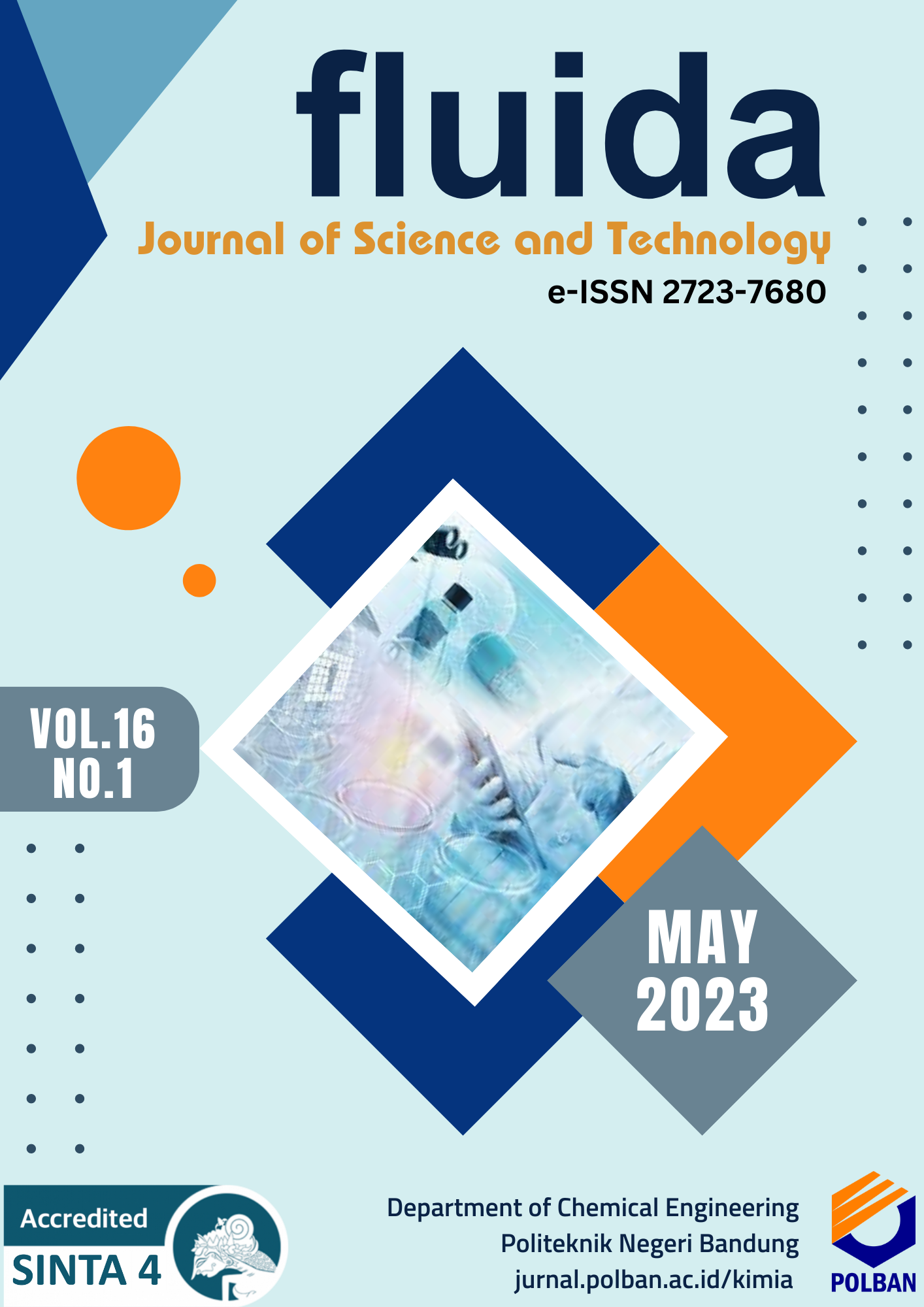Effect of Piping Configuration on Determining Alarm Response Time in HP Scrubber Using Dynamic Simulation
Main Article Content
Abstract
The HP scrubber is an equipment used to separate liquid from gas in the oil and gas industry. The low liquid level in the vessel is one of the abnormal conditions in the HP scrubber, a blowby gas event will happen because of a low level. So, the controller level indicator is required to prevent system damage and workplace accidents. The alarm response time is calculated in order to avoid an accident. To determine the alarm response time for a HP scrubber, a dynamic process simulation method can be used using Aspen HYSYS version 12. In a process simulation modeling also requires a process description that can describe real-world conditions, one of which is the condition of the existing piping in the system. Failure scenarios caused a process to have abnormal conditions, allowing the alarm response time to be calculated, and it can be modelled by using the event scheduler facility In Aspen HYSYS. The HP scrubber's maximum alarm response time without pipe segments and with the addition of 16 m pipe segments are 2.42 minutes and 2.56 minutes. Meanwhile, the time from alarm to failure on the HP Scrubber without and with the addition of 16 m pipe are 13.60 minutes and 28.70 minutes, respectively. So, the length of segment pipes added to the pipe configuration does not really affect the alarm response time. However, it can affect the time until a process failure occurs.
Downloads
Article Details
An author who publishes in the FLUIDA journal agrees to the following terms:
- Author retains the copyright and grants the journal the right of first publication of the work simultaneously licensed under the Creative Commons Attribution-ShareAlike 4.0 License that allows others to share the work with an acknowledgement of the work's authorship and initial publication in this journal
- Author is able to enter into separate, additional contractual arrangements for the non-exclusive distribution of the journal's published version of the work (e.g., post it to an institutional repository or publish it in a book) with the acknowledgement of its initial publication in this journal.
- Author is permitted and encouraged to post his/her work online (e.g., in institutional repositories or on their website) prior to and during the submission process, as it can lead to productive exchanges, as well as earlier and greater citation of the published work (See The Effect of Open Access).
Read more about the Creative Commons Attribution-ShareAlike 4.0 Licence here: https://creativecommons.org/licenses/by-sa/4.0/.
References
[2] M. Maura, "Analisis Respon Transient Pada Pressure Control System Gas Scrubber dengan Metode Direct Synthesis," SNTEM, vol. 2, pp. 1316-1625, 2022.
[3] K. Prayogo and Rindiarto, “nalisis Kinera Sistem Pengendalian Tekanan dan Level Pada Scrubber PV-3700 di JOB Pertamina-Petrochina Jawa Timur,” 2016.
[4] F. R, “Efek Panjang Pipa Terhadap Aliran Berkembang Penuh untuk Air Tawar dan Larutan Biopolimer Cairan Beras Hasil Fermentasi,” 2014.
[5] I. R, “Hazard and Operability Study by Layer O Protection Analysis Method to Gas Scrubber V-222 PT. Pertamina Hulu Energi West Madura Offshore,” 2016.
[6] N. A. M, “Dynamics Simulation of Vinyl Chloride Monomer (VCM) Reactor Using Aspen Hysys,” 2013.
[7] S. M, “Dynamic Simulation of Offshore Gas Processing Plant for Normal and Abnormal Operations,” Elsevier, vol. 230, 2020.
[8] D. J, “Modeling and Simulation of Scrubber System Dynamic In Gas Refinery Plant,” in Seminar Nasional Teknik Mesin 7, 2013.
[9] O. A, M. M and P. R, “evealing hidden debottlenecking potential in flare systems on offshore facilities using dynamic simulations– A preliminary investigation,” Loss Prevention in the Process Industries, 2020.
[10] A. Xiao, “Selected Process Safety Systems Analysed Using Dynamic Simulations,” Aalborg University, 2020.
[11] S. Dutta, “Failure Mode Effect Analysis of Analog Alarm Trip Unit Using Simulation Technique,” Lecture Notes in Mechanical Engineering, 2019.
[12] R. Ilham, “Hazard and Operability Study by Layer O Protection Analysis Method to Gas Scrubber V-222 PT. Pertamina Hulu Energi West Madura Offshore,” 2016.
[13] Heriyanto, “Pengendalian Proses,” Politeknik Negeri Bandung, 2010.
[14] J. Haydary, “Chemical Process Design and Simulation Aspen Plus and Aspen HYSYS Applications,” Process Ecology, 2019.
[15] F. J, “Dynamic Process Simulation: When do we really need it?,” Process Ecology, 2015.
[16] S. Y, “Perancangan sistem Pengendalian Tekanan Gas dan Level Liquid pada Fuel Gas Scrubber di Pertamina EP Gas Musi Timur Field Pendopo Berbasis Fuzzy Logic Controller,” Universitas Gajah Mada, 2016.
[17] K. A. Z, “odel-Based Dynamic Categorization of Alarm Trip Points for Manufacturing Process Disruption Minimization,” International Journal of Computer Intergated Manufacturing, vol. 34, pp. 1125-1137, 2020.
[18] F. J, “Dynamic Process Simulation: When do we really need it?,” Process Ecology, 2015.

